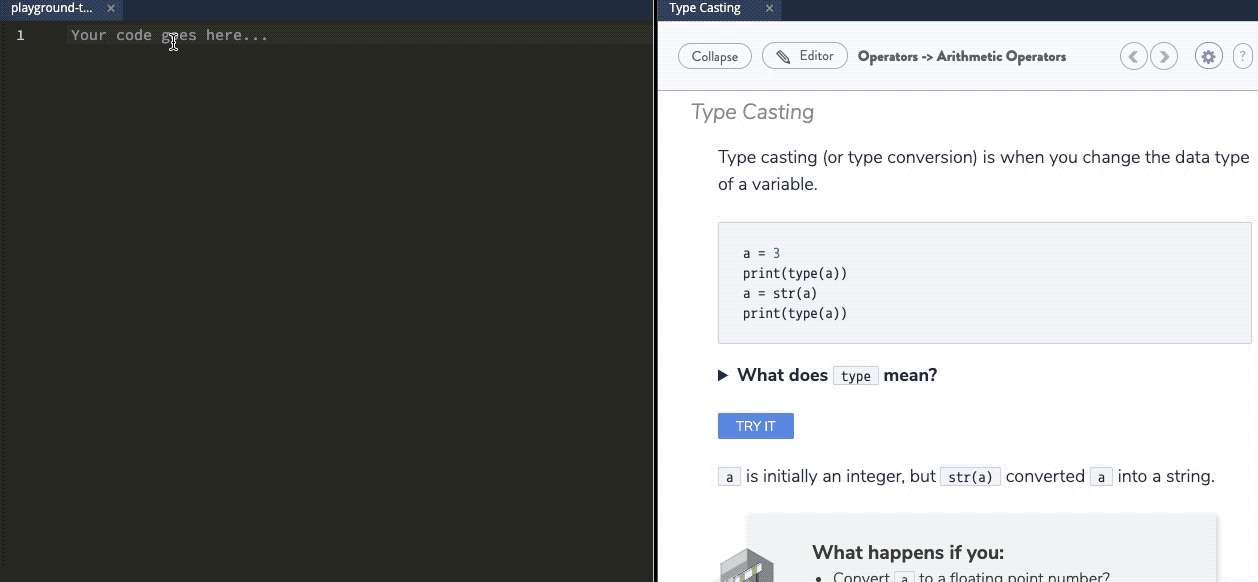As the industry moves away from textbooks, educators need interactive content that takes full advantage of its digital nature. Codio is producing new Computer Science content optimized for our platform, leveraging our ability to present functional code and content side-by-side for hands-on learning, while automatically assessing student performance, providing rich, instant feedback to learners, and student progress visualizations—shifting instructor time from grading to teaching.
Instructors can fully customize student experiences from the layout to wording to the strictness of auto-graders. The content provided is the equivalent of CS1 and CS2 courses. Currently, the following Codio Resources are available:
- CS: Introduction in Python
- CS: Objects in Python
- CS: Introduction in Java
- CS: Objects in Java
- CS: Introduction in C++
- CS: Objects in C++
...with more on the way! These can be blended together, or with any of the other content in our Resource Library.
Taking a closer look, this new content distinguishes itself in four main ways: interactivity, transparency, approachability, and modularity.
Constructing Knowledge Through Coding
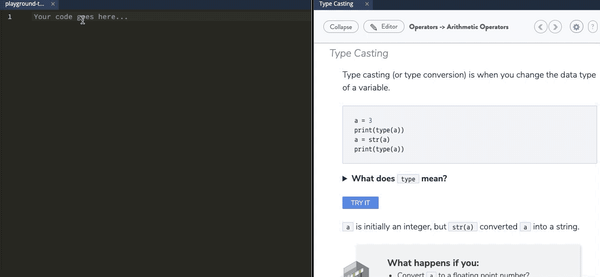 Codio’s new computer science trajectory puts the emphasis on students applying and exploring the information presented. A code editor accompanies each page with new concepts so students can see for themselves how the computer responds to code. In addition, the content provides code snippets to get students started as well as suggested avenues for investigation.
Codio’s new computer science trajectory puts the emphasis on students applying and exploring the information presented. A code editor accompanies each page with new concepts so students can see for themselves how the computer responds to code. In addition, the content provides code snippets to get students started as well as suggested avenues for investigation.
Code visualizers are integrated into appropriate pages so that students can see how the computer navigates complex flow and structures such as conditionals, loops, and list iteration. This visualization allows students to take the abstract concepts of computer science and render them more tangible. At its core, this new computer science content allows students ample practice at coding, as well as the opportunity to look under the hood of their code.
Demystifying Student Performance
Codio’s auto-grading capabilities benefit both instructors and students Codio's powerful assessments engine allows you to automate up to 90% of all grading, saving valuable time. Students receive immediate, rich feedback, boosting engagement and information retention. In addition to correctness feedback (i.e. right or wrong), students will also see an explanation with the complete solution.
There are a wide variety of questions in the new computer science trajectory — all of which are auto-graded, giving students a sense of their understanding of the material right after they are introduced to it and as they attempt harder and harder problems.
Our resources can be customized with any of the editable, auto-graded assessments in our Global Assessments Library (below). The library can be sorted by programming language, assessment type, category, content type, learning objective, and Bloom's taxonomy level. Each question can be used as-is or edited for a more tailored learning experience.
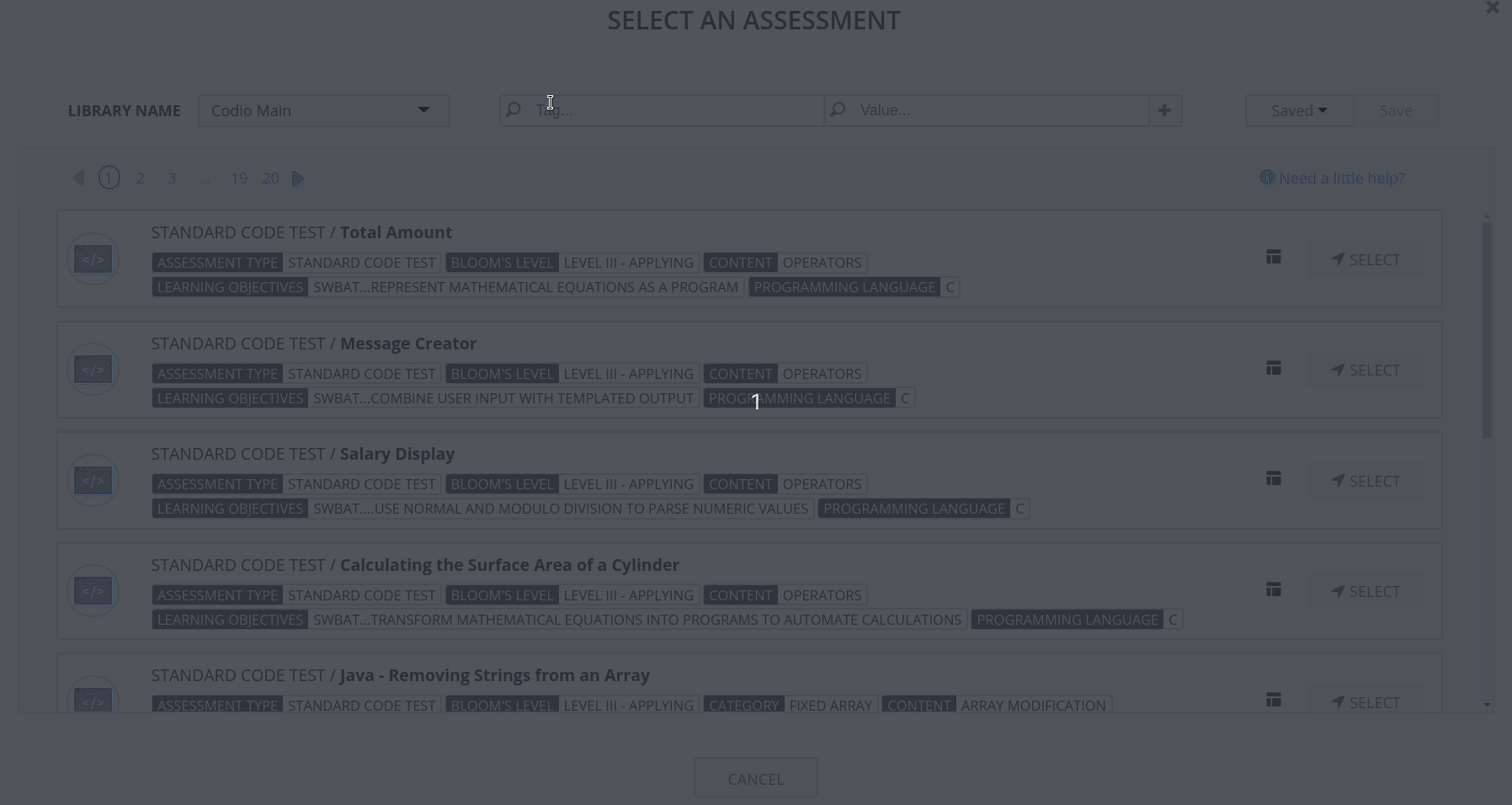
These same questions improve the experience for instructors as well. Those short, simple questions designed to capture students’ comprehension of a particular topic is one of the best ways for an instructor to keep tabs on their students. Codio’s platform feeds the results from auto-graded questions into the Learning Insights dashboards (below). This provides instructors with visual feedback on student and class performance, allowing them to monitor learning gains and intervene before a student falls behind.
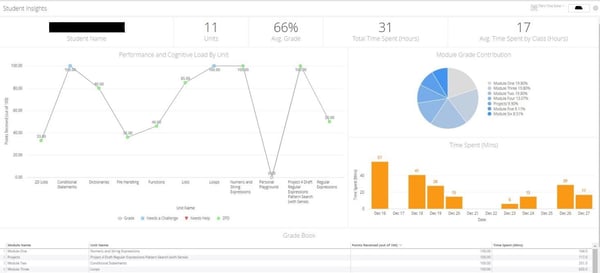
Lowering the Barrier to Entry
-1.png?width=355&name=unnamed%20(1)-1.png) The text of the new computer science content reflects the need for computer science education to meet students where they are. Like any specialized community, computer science has its own jargon. The formal teaching of computer science should not burden students with the assumption that they are fluent in this special language. Codio’s new computer science content presents the material in smaller units that are more manageable for the students. The same vocabulary and concepts are covered, but in a more approachable way — state things as plainly as possible, and, when appropriate, use images, tables, or lists. Research shows that a minimal text approach to a technical subject led to more learning. This approach:
The text of the new computer science content reflects the need for computer science education to meet students where they are. Like any specialized community, computer science has its own jargon. The formal teaching of computer science should not burden students with the assumption that they are fluent in this special language. Codio’s new computer science content presents the material in smaller units that are more manageable for the students. The same vocabulary and concepts are covered, but in a more approachable way — state things as plainly as possible, and, when appropriate, use images, tables, or lists. Research shows that a minimal text approach to a technical subject led to more learning. This approach:
- Improves aspects such as completion time, amount remembered, and student satisfaction by 58% (Nielsen, 1997).
- Increases student understanding for secondary language learners (Leow 1997, cited in Edgcomb et al, 2015).
- Doubles learning gains between pre and post tests (Edgcomb et al, 2015).
- Raised student satisfaction by 26%.
Another way in which Codio’s new computer science content is more approachable is that it is using many small programs instead of one large program. Additional research shows that a variety of smaller problems increase student performance and reduce stress. Using many small programs leads to students spend a sufficient amount of time on their work, and they do not wait until the last moment to begin their work.
Encouraging Customization Through Modularity
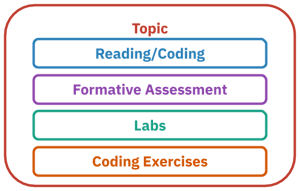 This new content is not a one-size-fits-all solution. Instead, it implements a modular format. Natural break points occur in the curriculum where instructors can make the changes they deem necessary. Instructors can re-name, re-order, or remove units.
This new content is not a one-size-fits-all solution. Instead, it implements a modular format. Natural break points occur in the curriculum where instructors can make the changes they deem necessary. Instructors can re-name, re-order, or remove units.
Using Codio’s excellent content authoring tools, they can author new material. This modular approach gives instructors flexibility when designing the learner’s experience (Downey et al, 2019).
Computer Science: The Codio Experience
Codio’s new computer science content improves student engagement and helps with student attrition. Student engagement improves because students are actively participating in their learning. Instead of reading, students are asked to write and run code. Moreover, the new content encourages students to explore their programming language. Student attrition is improved because Codio’s approach presents material in smaller, easier to manage formats. This holds true for reading and coding assignments alike.
Instructors, too, benefit from the new content. All of the lessons are ready to go, and no input is needed. However, Codio provides content authoring tools and a modular design if instructors want to customize the learning experience for their students. Most importantly, Codio’s Learning Insights demystifies student performance. Auto-graded assignments provide immediate feedback to the student and instructor.
More to Come
This is just the start of Codio’s scaffolded content. Topics will expand to include data structures and algorithms, and we will also be adding more languages over the next several months.
References
Allen, J. M., Downey, K., Miller, K., Edgcomb, A. D., & Vahid, F. (2019, June). Many Small Programs in CS1: Usage Analysis from Multiple Universities. In 2019 ASEE Annual Conference & Exposition.
Nielsen, J. (1997, October 1). How Users Read on the Web. Retrieved October 30, 2019, from https://www.nngroup.com/articles/how-users-read-on-the-web/
Edgcomb, A., Vahid, F., Lysecky, R., Knoesen, A., Amirtharajah, R., & Dorf, M. L. (2015, June). Student performance improvement using interactive textbooks: A three-university cross-semester analysis. In the Proceedings of the ASEE Annual Meeting.

